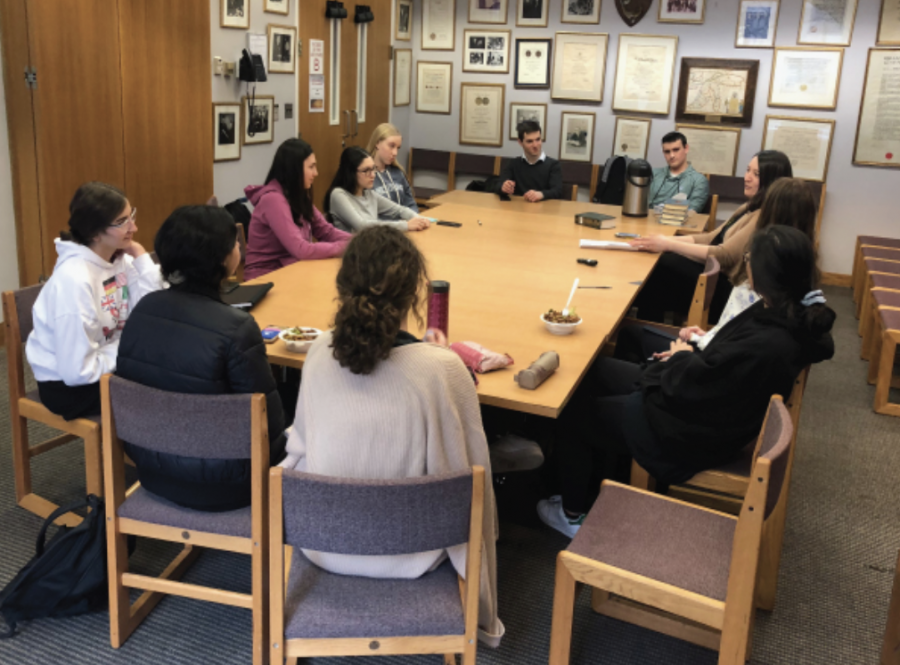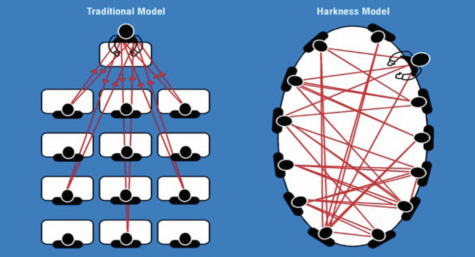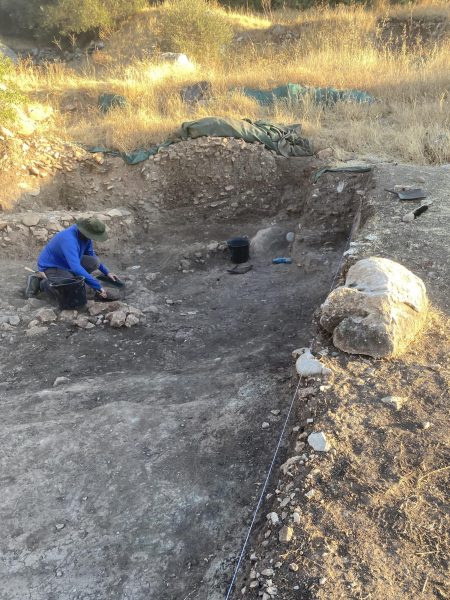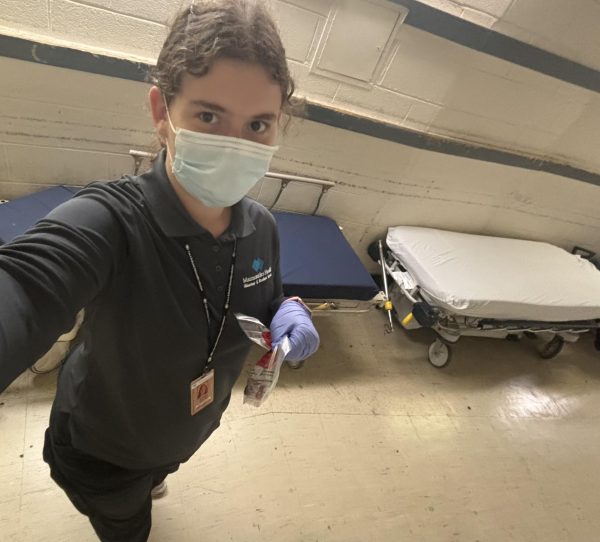See Different? Another Approach to Learning
Ms. Litwack’s Harkness teaching style is well-known throughout the Ramaz student body for its unique and engaging aspects. In normal circumstances, when the limitations of COVID-19 protocols do not exist, Ms. Litwack’s junior-year students huddle together to form a tightly-knit circle where they discuss class material with little teacher intervention. One might assume that little teacher intervention in class discussion would mean little teacher involvement within the classroom; if so, they would be incorrect. While the students are involved in profound conversation, it is Ms. Litwack’s job is to observe. A major piece of the Harkness method is assessing individual student’s role in the class discussion to create a balanced discussion, where all student voices can be heard by their fellow classmates.
To ensure that this balance in the classroom is possible, Ms. Litwack creates a map of the class while students are engaged in discussion. To do this, she draws a diagram of the classroom and indicates where every student is sitting. As the class period progresses, she adds details to the map, like arrows signaling which students spoke to each other, whether they spoke to the whole group or to one person, or if they asked a question, etc.
“Kids are very anxious to see the results of the maps,” said Ms. Litwack, in an interview. “It’s so interesting when kids are provided with actual data about what’s going on in the class. It requires a certain level of maturity.” The maps used in Ms. Litwack’s classes often altered how students participated in future class discussions; sometimes, students who had certain perceptions about how they participated were proven wrong by the data they were given.
“It’s not all about content. It’s about discussion skills, too,” said Ms. Litwack. “Even with my older students, I had to spend a lot of time setting up the classroom, and that was something that sometimes put me behind the other teachers.” However, the benefits of the Harkness teaching method ultimately outweighed the setbacks, in Ms. Litwack’s eyes.
“I thought that [the Harkness teaching style] was so empowering for students. They loved it, and they liked the spirit of the experiment. They were learning skills that were both life skills and academic skills. It’s important to learn how to behave in a discussion, and how you want to behave in a discussion, and what’s important to you. It was different,” she said.
The Harkness method allows for students to take control of their own learning process, and experience a learning environment that contrasts with their other classes.
“It became very personal. Kids who wouldn’t normally talk to each other, talked to each other, and kids who wouldn’t normally listen to each other, listened to each other. They got to know each other much better,” explained Ms. Litwack. “There were many breakthroughs.”
Despite the many advantages of the Harkness teaching method, some students refused to accept the alternate style of learning. According to Ms. Litwack, a small number of students attempted to transfer out of her class.
“They were angry with me,” she admitted. “They wanted a traditional class where they could just take notes and write their papers. They didn’t want to be actively engaged.”
Undeterred by the small amounts of backlash she received, Ms. Litwack will continue to use the Harkness method, citing the benefits that her students obtained from her distinctive teaching style. Seeing as English class is a discussion-based subject at Ramaz, with varying levels of involvement, it would make sense to implement the Harkness teaching style within the class. But what about implementing the method in other courses? Ms. Litwack might have the answer.
“I took a science class [that used the Harkness method],” she said. “I loved it. We went in, and were given a lab sheet, and were just told to do the lab, and then we had to come up with a theory [about the lab]. I got to hear all these theories, and the teacher guided us. He watched us torture ourselves, trying to find the right answer, and we eventually came to an answer. It was so much more interesting than just listening to a lecture; [the teacher] let us just figure it out.”
While implementing the Harkness method in other classes might not seem productive to some, there is no question that it would keep students engaged and interested in the class material.





